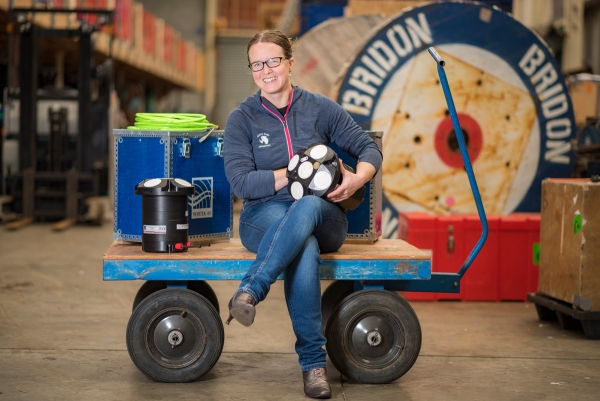A dramatic change in sea ice this year is likely to hamper a NIWA-led research project aiming to better understand how ice shelves will melt as the ocean warms.
NIWA marine physicist Dr Natalie Robinson and her team are due to head to Antarctica next week for a six-week research stint on the ice. They planned to set up a container camp at McMurdo Sound, 50km from Scott Base to study ice crystals—or platelet ice—that form between the ice shelf and the sea ice. However, the absence of sea ice this year means they may be confined to Scott Base and have to make daily trips to their research sites.
Dr Robinson says that may mean she will only be able to achieve about 60 per cent of what is planned.
“It will mean a lot more extra time spent travelling so that may compromise what we do. Even if it looks good for travel there is still a heightened risk that a storm may break the ice up.”
This year’s research is the follow-up to a hugely successful time at Antarctica for Dr Robinson last year. Perfect weather conditions then meant she and her team were able to achieve more than what they had initially planned.
“Last year our local sea ice coverage was extensive, this year we’re right at the other end of the spectrum.”
Dr Robinson’s Marsden-funded research involves testing how the ice crystals—formed in water colder than freezing—affect turbulence and heat transfer in the upper ocean as they grow and cluster together. The research will ultimately provide new information that can be fed into climate models, making them better at simulating our future climate.
The team has been poring over satellite pictures looking at the changes and has been in contact with Antarctica New Zealand, which is in charge of logistics on the ice, to discuss the situation. However, Dr Robinson says they may not know exactly what they will be able to do until they arrive at Scott Base next week.
“It’s just the way it works, you can make all the plans but it’s really a matter of seeing what the environment will let you do. We are still hopeful of getting some vital measurements but may have to reduce the number of objectives we have,” she says.
Huge winter storms are likely to blame for this year’s lack of sea ice which has prevented newly-formed ice from becoming ‘landfast’, resulting in large holes or polynas in the ice. Polynas are stretches of open water surrounded by ice, usually found at the coast. One, known as the Maud Rise Polyna, has grown to 80,000 square kilometres since September.
A second research project Dr Robinson is involved with is also facing similar challenges. The research, funded by the Deep South National Science Challenge, is trying to better understand the role of sea ice in climate change. Last year, in the first stage of the research, measurements of the extent and thickness of the sea ice were taken with plans to repeat them this year. However, three of the sites are now open water, and others are looking marginal for access.
Dr Robinson describes sea ice as the engine of the climate system—the regular pulse of the Earth that responds to, and drives, large-scale climate variation.
“Its influence stretches into the daily lives of every citizen on the planet. Sea ice is the biggest annual change on the surface of the planet and plays a huge role in ventilating the deep ocean and delivering heat around the globe. But its year-on-year behaviour has become more erratic and we need to understand what is happening to help us predict how it might change in the future.”

